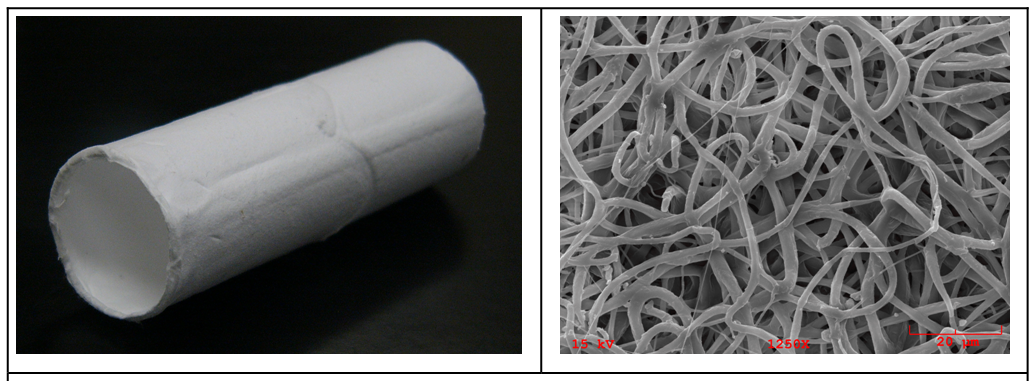Electrospinning and understanding nanofiber properties for tissue engineering

Electrospun blood vessel scaffold made from PCL nanofiber composite (diameter, 4 mm; left); SEM image (right)
We are studying electrospun fibrinogen, collagen and synthetic polymer nanofibers, which find applications as scaffolds in tissue engineering and material science applications. This work is done in collaboration with the Nanotech center at Wake Forest University, and the Wake Forest Institute of Regenerative Medicine (WFIRM).
Electrospinning and nanofiber specific publications:
- Baker, S., Sigley, J., Helms, C. R., Stitzel, J., Berry, J., Bonin, K.., Guthold, M. “The Mechanical Properties of Dry, Electrospun Fibrinogen Fibers” Materials Science and Engineering C (2012) 32, 215-221.
- Kim, J., Song, H., Park, I., Carlisle, C., Bonin, K., Guthold, M. “Denaturing of single electrospun fibrinogen fibers studied by deep ultra-violet fluorescence microscopy” Microscopy Research and Technique (2011) 74, 219-224.
- Carlisle, R.C., Coulais, C., Guthold, M. “The mechanical stress-strain properties of single electrospun collagen type I fibers” Acta Biomaterialia (2010) 6, 2997-3003.
- Carlisle, R.C., Coulais, C., Namboothiry, M., Carroll, D., Hantgan, R.R., Guthold, M. (2009) “The mechanical properties of individual, electrospun fibrinogen fibers” Biomaterials (2009) 30, 1205-1213.
Funding from the NSF.

